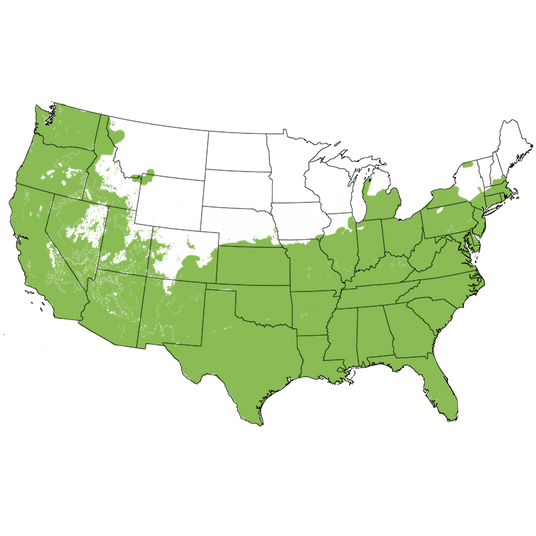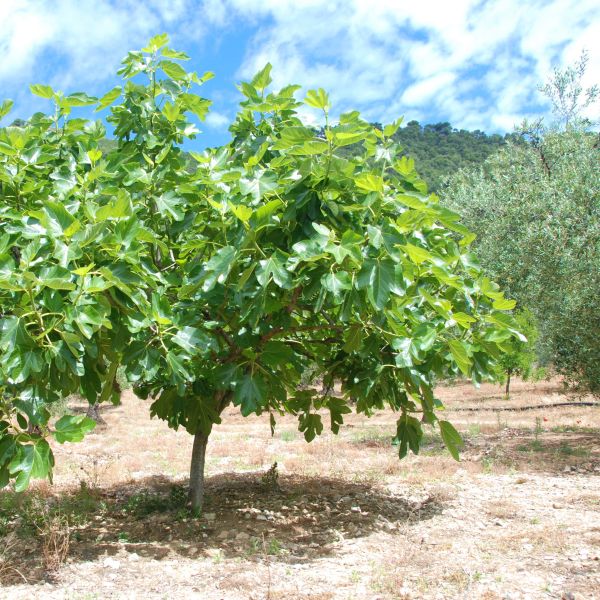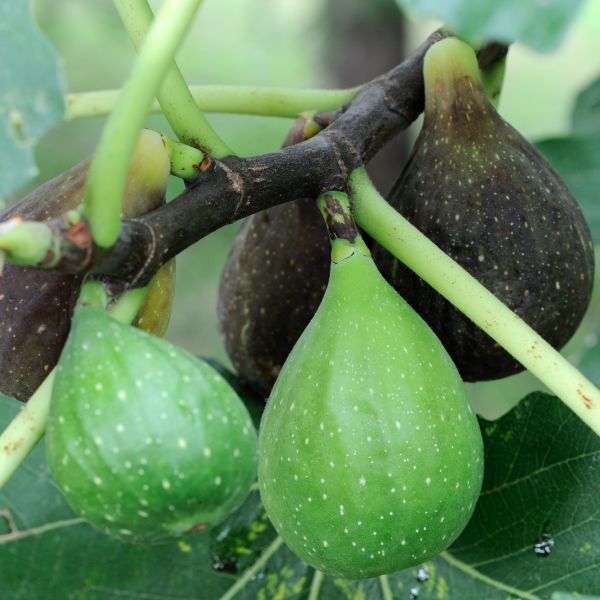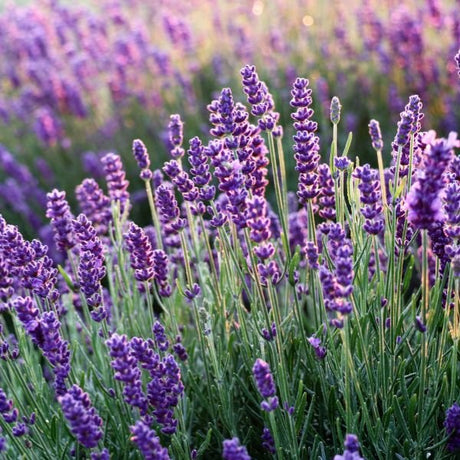Celeste Fig Tree
Ficus carica 'Celestial'
- Stay Protected with Plant Sentry ™
Celeste Fig Tree - Quart Container is backordered and will ship as soon as it is back in stock.
Plant Sentry™
Plant Sentry™

Plant Sentry™ Protected
Your order is protected by our compliance system that:
- Prevents restricted plants from shipping to your state
- Ensures plants meet your state's agricultural requirements
- Protects gardens from invasive pests and diseases
Delivery and Shipping
Delivery and Shipping
Delivery and Shipping
Fast, Safe Plant Delivery
Ships in 3-4 business days • Tracking provided • Weather protected
| Under $50 | $9.99 |
| $50 - $99.99 | $14.99 |
| $100 - $149.99 | $16.99 |
| $150+ | $24.99 |
✓ Zone-specific timing • ✓ Professional packaging • ✓ Health guarantee
Understanding Plant Options
Nature Hills offers plants in two main formats:
- Container Plants: Grown in pots with soil, sized by container volume and plant age
- Bare Root Plants: Dormant plants without soil, sized by height measurements
Container Plant Sizes
Container sizes indicate plant age and growing capacity rather than liquid volume equivalents. Our containers follow industry-standard nursery "trade gallon" specifications, which differ from standard liquid gallon measurements.
Young Plants (6 months to 18 months old)
| Container Size | Actual Volume | Metric Equivalent |
|---|---|---|
| 2" x 2" x 3" | 0.18 - 0.21 dry quarts | 0.20 - 0.23 dry liters |
| 4" Container | 0.31 - 0.87 dry quarts | 0.35 - 0.96 dry liters |
| 4.5" Container | 0.65 dry quarts | 0.72 dry liters |
| 6" Container | 1.4 dry quarts | 1.59 dry liters |
| 1 Quart | 1 dry quart | 1.1 dry liters |
| 5.5" Container | 1.89 dry quarts | 2.08 dry liters |
Established Plants (18 months to 2.5 years old)
| Container Size | Actual Volume | Metric Equivalent |
|---|---|---|
| 2 Quart | 2 dry quarts | 2.2 dry liters |
| #1 Container | 2.26 - 3.73 dry quarts | 2.49 - 4.11 dry liters |
| 5" x 5" x 12" | 3.5 - 4.3 dry quarts | 3.85 - 4.74 dry liters |
Mature Plants (2-4 years old)
| Container Size | Actual Volume | Metric Equivalent |
|---|---|---|
| #2 Container | 1.19 - 1.76 dry gallons | 5.24 - 7.75 dry liters |
| #3 Container | 2.15 - 2.76 dry gallons | 8.14 - 12.16 dry liters |
Large Plants (3-5 years old)
| Container Size | Actual Volume | Metric Equivalent |
|---|---|---|
| #5 Container | 2.92 - 4.62 dry gallons | 12.86 - 20.35 dry liters |
| #6 Container | 5.25 - 6.01 dry gallons | 23.12 - 26.42 dry liters |
| #7 Container | 5.98 - 6.53 dry gallons | 26.34 - 28.76 dry liters |
Bare Root Plants
Bare root plants are sold by height from the root system to the top of the plant. Plants may exceed minimum height requirements.
Common Sizes:
- Trees: 1 foot, 2 feet, 3 feet, 4 feet, 5 feet, 6 feet
- Shrubs & Perennials: 1 foot, 18 inches, 2 feet
Important Notes
Container Volume Specifications
- Trade Gallon Standard: Our containers follow industry-standard "trade gallon" specifications established by the American National Standards Institute (ANSI Z60.1) for nursery stock
- Volume Variations: Actual soil volume may vary due to plant root systems and growing medium settlement
- Age Indicators: Container size primarily indicates plant age and maturity rather than liquid volume equivalents
Growing Conditions
- Plant size can vary based on variety and growing conditions
- Container size helps indicate plant maturity and establishment level
- Larger containers generally mean more established root systems and faster landscape establishment
Seasonal Availability
- Bare root plants are available seasonally when dormant
- Container plants are available throughout the growing season
- Specific varieties may have limited availability in certain sizes
Questions?
For questions about specific plant sizes or availability, please contact our plant experts who can help you choose the right size for your landscape needs.
Plant Highlights
Celeste Fig Tree highlights at a glance!
-
Botanical Name
-
Brand
-
Growing Zones6, 7, 8, 9, 10
-
Growth RateModerate
-
Mature Height
-
Mature Width
-
Leaf Color
-
Fall Color
-
Pollinator FriendlyYes
-
Pollinator Required
-
Bloom PeriodEarly Summer, Late Summer, Early Fall, Late Fall
Characteristics
Where To Plant
When To Prune
- Late Winter
Water & Moisture Needs
- Moderate
Sunlight Needs
Soil Needs
- Widely Adaptable

Growing Zones 6-10
Smooth, Sweet as Sugar Celeste Fig Tree
- Luscious Fruit
- Self-Fertile, No Pollinator Needed
- Closed-Eye Resists Souring
- Disease and Deer Resistant
- Wonderful in High Heat, Humidity, Coastal Conditions and Containers
- High Quality Late Season Main Crop
Celeste Fig (Ficus carica 'Celestial') is one of the most widely planted Fig trees in the United States and with good reason. This Fig tree produces such sweet and delicious fruit that it often goes by its nickname, the "Sugar Fig".
It earns its nickname each summer with scrumptiously sweet fruit that has a rich, buttery-smooth flavor and texture. The fruit is not only delicious - it's beautiful, too.
The fruit features edible, violet skin and rose-colored, strawberry-like flesh inside. Celeste Figs can be eaten fresh for a delightful treat. No need to peel, you can eat the skin and all! The fruit also dries perfectly for long-term storage and easy snacking.
The tree itself makes an impressive specimen. You'll love the distinctive, deep-green lobed Fig leaves that grace the tree all summer long. The leaves have such a wonderful, tropical shape and the branches have a nice-looking structure.
Celeste Fig is one of the easiest fruit trees you can grow. Here's why:
It's a self-pollinating tree, so you only need one tree. It's a medium-sized tree that doesn't need a lot of pruning. It will stay small enough for you to easily harvest your crop.
This is a 'closed-eye' variety, which means the little eye on the bottom of the fruit stays tight. This helps it resist pests, splitting and souring. This is especially welcome in those long, humid summers of the Deep South.
Celeste Fig is disease resistant. It's also heat tolerant, versatile and adapts beautifully to most climates. Well known to be a vigorous grower in the more humid climates of the South, Celeste shows itself to be a more compact grower in the drier climates of the Western and Southwestern United States. This tree produces well in coastal areas. It even performs well in large containers.
While this tree will produce fruit as a single tree, you'll enjoy a larger crop with two or more trees. For a grove of Celeste Figs, plant them about 10 feet apart. You'll measure from the center of one trunk to the center of the next.
Overall, growers love this easy-peasy, sugar-sweet Fig variety. Order yours today!
How to Use Celeste Fig Fruit
Celeste is a prolific producer. You'll have plenty of Figs on hand to make luscious fig preserves. We recommend trying a mix of fully ripe and still-firm Figs when making your preserves. What a treat on crusty bread over farm fresh butter!
You'll know when Celeste Figs are ripe when they start turning purple on the tree. They'll also soften up on the tree.
Figs can dry in a dehydrator, or you can leave them hanging in the tree to dry on their own in the sun. Chop them with almonds, cashews, dates and cinnamon to create healthy fudge, or use as a mainstay sweetener in homemade energy bars. Of course, you can also enjoy these fabulous natural desserts all on their own as the perfect way to end a healthy meal.
Want an easy gourmet appetizer? Slice figs and stuffing figs with a artisan goat cheese. Then add a wrap of bacon (or prosciutto, if you can find it!) and place on the grill for a few minutes or bake about 10 minutes. Yum, now that's a perfect late summer treat.
You'll feel good about these nutrient-dense, fiber-rich snacks loaded with calcium, potassium and magnesium. Figs are great for bone strength and to improve digestion. The taste? Think Fig Newtons without the mealy, cakey coating. Fresh or dried, Figs are a nutritional powerhouse for your whole family.
#ProPlantTips for Care
Hardy from USDA Growing Zones 10 to 6, please give Celeste a planting location in full sun and well-drained soil. Once established, it will require very little supplemental watering except in the hot interior valleys of the Central Valley of California.
Very easy to grow, Figs can be trained in a number of different ways. Grow it with a single trunk as a standard tree or allow multiple trunks to grow and create a shrubby tree. No matter how you choose to use it in your landscape, it's simple to keep the plant to an "easy picking" height with regular pruning.
Figs are one of the best plants to train as an espalier tree, or to grow in containers. In Zone 6, remember to insulate the root from winter cold with burlap or other protective materials. For winter protection, move your container plant to a well-lit covered patio area and cover with a frost blanket. You can also move the container into an unheated shed or garage once it's dormant to overwinter it.
Want to grow Figs in Zones 5 and colder? Try Chicago Hardy Fig for best results.
When growing in a container, please select a deep container that has plenty of drainage holes in the bottom. Drill a few more, if you need to. Give container-grown fruit regular water, but don't use a saucer under outdoor containers. You won't want to let Figs sit in standing water, allow the water to drain fully.
Figs are one of Nature's perfect foods. Celeste is one of the best of the best, with an exceptional flavor and ease of care.
Celeste does set a small early - or Breba - crop, but this variety is all about the high quality of the late season main crop. This fruit is an exceptional variety for drying.
The Celeste Fig from Nature Hills will be true to type, so find a location in your yard for this very special age-old favorite and begin enjoying figs as soon as next year. Order yours from us today!
Beloved Celeste Fig Favored Through History
A fig by many names, the Celeste Fig (Ficus carica 'Celestial') is thought to be the age old 'Malta' selection as described as far back as the early 1700's in Europe.
Brought to the United States In the mid 1700's (the Malta) or Celeste Fig was touted for its cold hardiness. The sweet fruit was wonderfully rich, with a buttery smooth flavor and texture.
The qualities of this unique fruit did not stop there; it also was known for drying right on the tree without souring. The fresh fruit that remained unpicked on the tree would dry to become what was known as sweetmeat.












